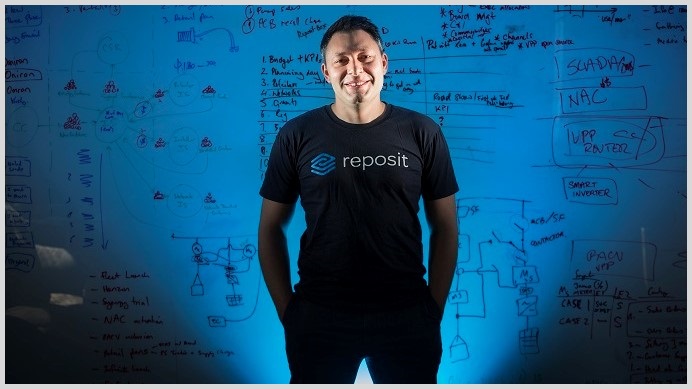Virtual power plants (VPP) connect homes that store solar energy and sell the power they generate back to the grid.
Governments have already seen the potential for this technology like in South Australia where the state is planning on connecting 50,000 homes to a 250-megawatt VPP.
But in places outside the scope of government initiatives, it can be virtually impossible to join a VPP and take the power back from big energy companies.
That’s where Australian entrepreneur Dean Spaccavento saw an opportunity.
Following years in the financial sector, he slowly developed an idea for software to connect multiple home solar batteries.
“There’s a lot of talk about the market being broken but I think it’s extremely flexible and supports a lot of innovation,” Spaccavento said.
“It’s very complicated but that’s the nature of electricity markets being a diabolical combination of electrical engineering and finance. In a lot of ways, the whole is more complicated than the sum of its parts.”
Buying and selling electricity
Spaccavento is co-founder and CEO of Reposit Power.
Reposit is a small computer that connects solar home battery systems directly to the energy market.
It collects and processes data about how much energy is going in and being used, how much it would cost to buy and sell electricity, and even how much cloud cover there currently is.
All of these processes are happening many times per second so Reposit can make better predictions about when to sell energy.
“It can predict how much solar each individual house will generate, what consumption that particular house has, and what market will do so it can make the decision to trade now or wait,” Spaccavento said.
“We condition batteries to be more valuable so when you think about installing a battery you look at the current payback. It ends up being much quicker.”
Reposit was initially developed before solar panels were found on just about every second rooftop.
Now, Spaccavento and his Canberra-based team are developing and improving on virtual power plants around the country, joining forces with the likes of Ausgrid to produce and market renewable energy.
How it works
Virtual power plants work by networking large numbers of home batteries (that each might have a capacity of 10KWh) to be deployed when the grid is in demand.
Since the energy market buys and sells in MWh, virtual power plants make it viable for householders to buy and sell their electricity at competitive rates.
Reposit’s fleet software has so far built 20 VPP networks around the country but, as with most digital disruptors, there has been push-back from traditional retails.
“Typically, it’s quiet and comes in form of tyre kicking, time-wasting mechanisms,” Spaccavento said.
“They don’t want to draw much attention to what seem to be well-rehearsed tactics but we’ve gone around the traps several times now and don’t deal with the big three retailers. They simply don’t meet our values.
“We do have good relationships with electricity retailers, but they tend to be the more progressive ones.”
Home automation
Along with virtual power plants, Spaccavento has high hopes for Reposit as a useful home automation tool.
“It’s integrated with IFTTT so you can build and applet in IFTTT and the Reposit controller will interact with things like appliances, pool pumps, even electric cars,” Spaccavento said.
“We had this one couple whose Reposit’s machine learning kept spitting out big peaks. We couldn’t figure out what it was. Then they said, ‘well, we do use the the kettle a lot.’
“As it turned out, they drank a lot of tea and had a big urn for hot water. So we gave them a free smart plug and controlled it such that the urn is always hot but only heats up when there’s excess solar.
“Another guy has rigged up his Reposit so if it doesn’t have load on his house for a certain period of time, it alerts his family.
“Honestly, home automation is looking for a killer app, and I think energy could be it.”
Spaccavento’s personal aim is using Reposit to develop a whole-home modular energy system. He is looking into electric vehicles like the Nissan LEAF or Mitsubishi Outlander which have bi-directional batteries, meaning they can receive and dispatch electricity.
“We’ve spoken to Mitsubishi and know their box can allow Reposit to control the battery in an Outlander,” he said.
“That way if it’s plugged in at home the system can trade off the car battery as well.
“I always get the cool stuff early and I’ve got a huge battery system so whenever it gets dispatched I make a lot of money.
"That never gets old.”










